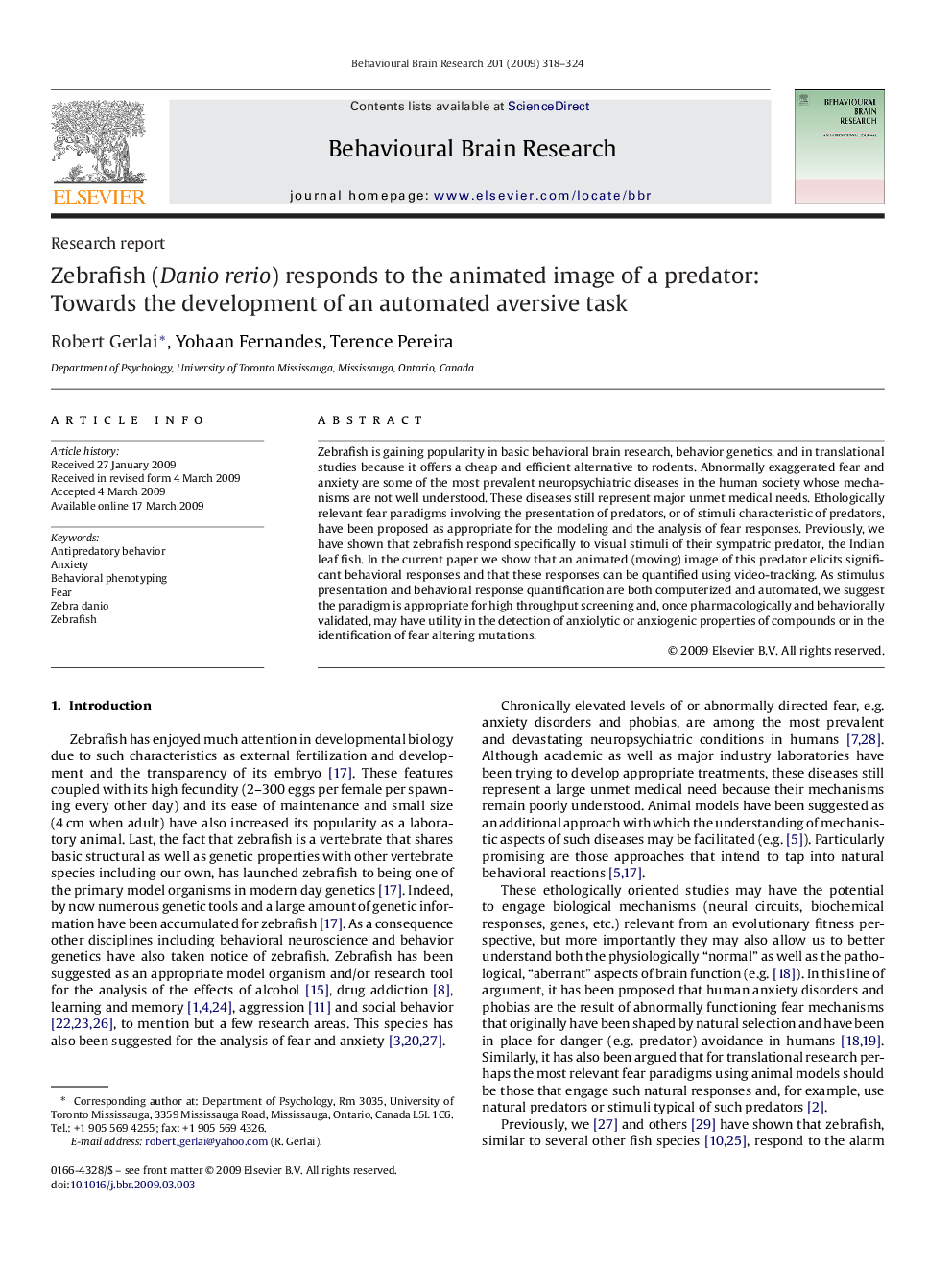| Article ID | Journal | Published Year | Pages | File Type |
|---|---|---|---|---|
| 4314725 | Behavioural Brain Research | 2009 | 7 Pages |
Zebrafish is gaining popularity in basic behavioral brain research, behavior genetics, and in translational studies because it offers a cheap and efficient alternative to rodents. Abnormally exaggerated fear and anxiety are some of the most prevalent neuropsychiatric diseases in the human society whose mechanisms are not well understood. These diseases still represent major unmet medical needs. Ethologically relevant fear paradigms involving the presentation of predators, or of stimuli characteristic of predators, have been proposed as appropriate for the modeling and the analysis of fear responses. Previously, we have shown that zebrafish respond specifically to visual stimuli of their sympatric predator, the Indian leaf fish. In the current paper we show that an animated (moving) image of this predator elicits significant behavioral responses and that these responses can be quantified using video-tracking. As stimulus presentation and behavioral response quantification are both computerized and automated, we suggest the paradigm is appropriate for high throughput screening and, once pharmacologically and behaviorally validated, may have utility in the detection of anxiolytic or anxiogenic properties of compounds or in the identification of fear altering mutations.
